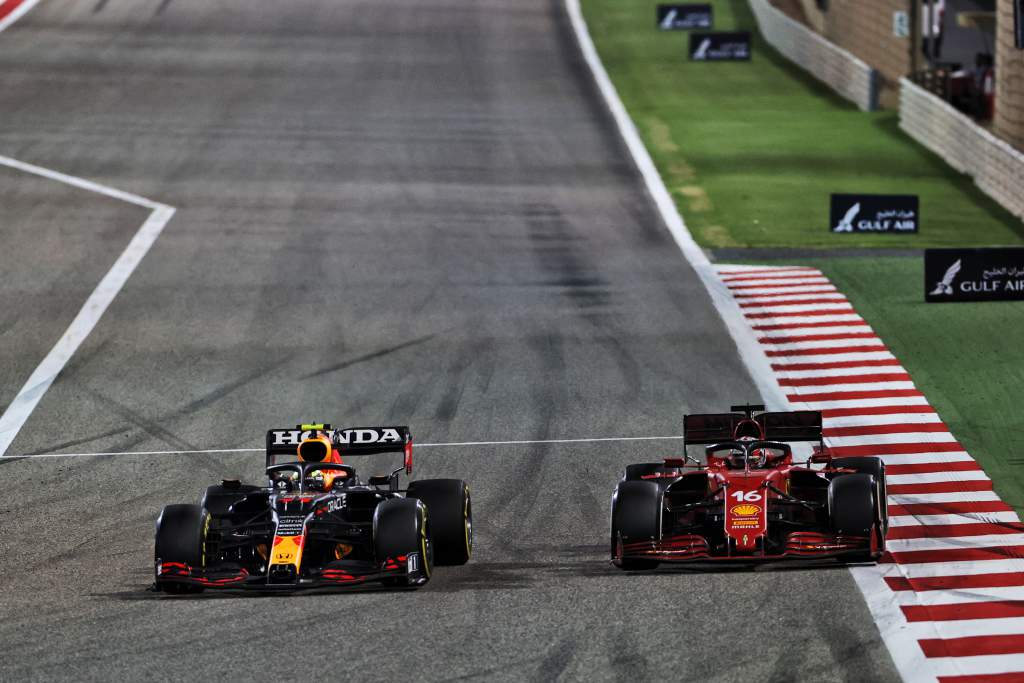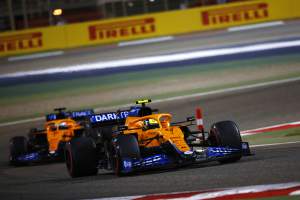Up Next

Behind the Mercedes vs Red Bull fight, two stand-out early conclusions from the start of the Formula 1 season were that McLaren had got closer to the front and Ferrari’s made a significant step as expected.
Ferrari qualified best of the rest in Bahrain, at a circuit neither of its cars made it into Q3 just a few months ago, while McLaren was superior in the grand prix with Lando Norris a quite comfortable fourth.
The latter’s result prompted Norris to say McLaren is “close, we’re not miles away” while his team boss Andreas Seidl said it “confirms that we made a good step forwards again compared to these top guys over the winter”.
Against Mercedes, the 2020 benchmark, this is certainly true. You may have read various pieces on The Race since Bahrain qualifying outlining the various improvements made by teams compared to last year, and in such comparisons McLaren – and Ferrari – come out rather well.

However, Mercedes has fallen back quite some way versus its 2020 pomp, a legacy of the regulation changes that have stripped away performance at the rear of the car, with the theory being that the low-rake Mercedes and Aston Martin cars have been hurt most by the changes.
This, combined with Red Bull improving the fundamental limitations it had with its 2020 car, has shifted the pecking order slightly. In Bahrain this year, the Red Bull was the quickest car.
As McLaren and Ferrari are seeking to catch Red Bull as well as Mercedes, it’s an interesting exercise to compare their progress specifically against Red Bull’s. After all, matching Mercedes will mean little if Red Bull is half a second quicker.
First, we need to take the respective fastest laps from Red Bull, Ferrari and McLaren – expressed as a percentage of the outright fastest – from the 2020 and 2021 Bahrain GP weekends, and the 2020 season as a whole. Then we can compare the 2021 Bahrain numbers to the 2020 data, which reveals each team’s performance swing. These numbers are shown here:
BAHRAIN GP PERFORMANCE SWINGS
How much each team closed their relative deficit to the front in the 2021 Bahrain GP vs 2020 (as a % of the outright best)
| vs BAHRAIN ’20 | vs SEASON ’20 | |
| RED BULL | -0.474% | -0.723% |
| FERRARI | -1.381% | -0.679% |
| McLAREN | -0.420% | -0.307% |
Once we have the individual team swings we can compare them against one another.
The below table shows how much Ferrari and McLaren gained or lost compared to Red Bull in the 2021 Bahrain Grand Prix.
FERRARI/McLAREN PERFORMANCE SWINGS vs RED BULL
How Ferrari/McLaren gains compare to Red Bull’s
| vs BAHRAIN ‘20 | vs SEASON ‘20 | |
| FERRARI | -0.907% | +0.044% |
| McLAREN | +0.054% | +0.416% |
Essentially what the table shows is that while Ferrari gained 0.907% compared to Red Bull from the 2020 Bahrain GP to the 2021 race, McLaren is actually fractionally further away.
And comparing Bahrain 2021 to the entire 2020 season shows both teams are actually worse off compared to Red Bull year-on-year (though of course we only have a very limited 2021 sample set).
For the purpose of this piece we really need to discard the 2021 Bahrain GP data relative to the 2020 season average. Bahrain vs Bahrain is much more relevant. And Ferrari holds up as well as we’d probably expect given it had some seriously low-hanging fruit to grab in the off-season because of how bad its 2020 was.
But statistically, comparing Bahrain to Bahrain, McLaren – despite closing up relative to the 2020 benchmark – has actually fallen further away from Red Bull.

That means, given Mercedes’ relative decline, it can be slightly misleading to simply state a team is ‘closer to the front’.
Both Ferrari and McLaren are. But McLaren is no closer to the leading team that hasn’t been hampered by rule changes. And that deficit relative to Red Bull is still important in McLaren’s quest to win races again.
So, does that mean the Mercedes step backwards warps McLaren’s progress? It depends how rigidly you want to stick to the data. This is, after all, just a small snapshot. And context is very important.
McLaren was severely limited with its car-focused performance gains given how much work was required to fit the new Mercedes engine into the car. And given Red Bull itself was underperforming last year thanks to the limitations of the RB16, it was actually unreasonable to expect McLaren to take a chunk out of the lead gap.
At the very least, it’s certainly not a major issue to have lost out to Red Bull in the circumstances. And it may be that as we add to the set of data available for 2021, McLaren will truly be more consistently closer to the front of the field.
The use of percentages to judge performance, with 100.00% being the baseline, is the most accurate – especially the greater the sample set. If nothing else, this exercise shows how much a verdict on a given team’s progress can be skewed by changing the reference point. Because if one compares Bahrain 2021 against the whole of 2020, an easy (and probably unfair!) conclusion to draw would be that McLaren and Ferrari have fallen further away.

The simplest takeaway from this is that it might be worth separating ‘McLaren vs Red Bull’ from ‘McLaren vs the front’. At least until we have more races and more data to work with.
In any case, there’s still a very big gap. Even though it seems to have shrunk a decent amount in qualifying, in the race McLaren was still more than a free pitstop behind the second Mercedes and Ferrari finished a minute off the winner. That’s massive and indicative of the progress that still needs to be made.
Red Bull and the slightly hampered Mercedes are still some way in front. And, at this early stage of the season, that’s about the only concrete conclusion that can be drawn.





